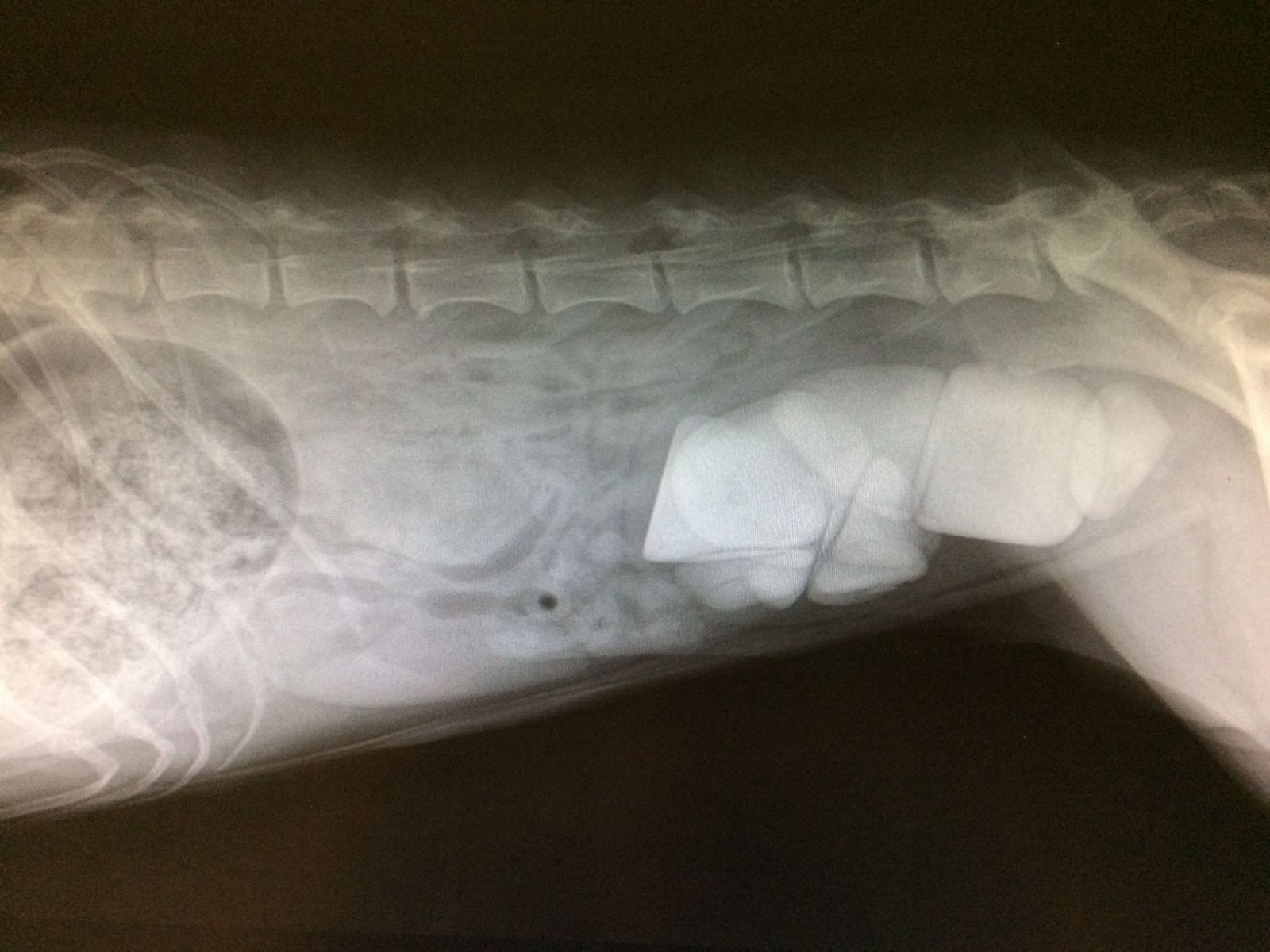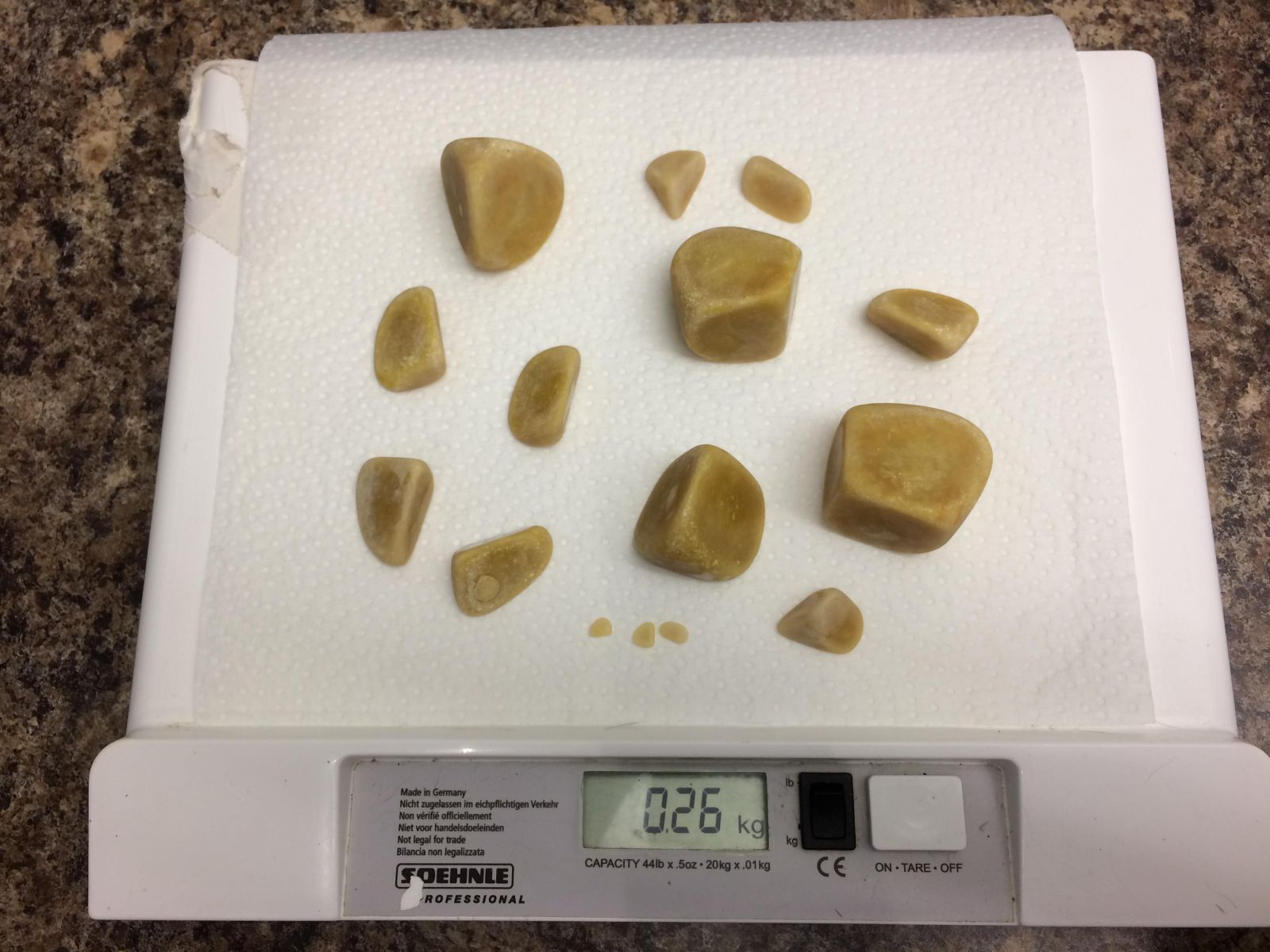One of the things I love most about Paris Veterinary Clinic is all of the incredible small animal surgeries going on every single morning. Everything from Tibial Tuberosity Advancements (knee surgery), to Perineal Urethrostomy (opening the urethra) surgery, to simple spaying and neutering of dogs, cats, rabbits, and pigs! One of my favourite surgeries of my experience thus far has been a cystotomy (bladder surgery), which in itself might not sound incredibly exciting, but it's the satisfying result of the surgery that makes scrubbing in such a joy!
BUT WAIT… Let’s start from the beginning...
Why on earth would someone cut into a bladder anyways?!
First of all I would like to show everyone this photo:
 This is a picture of an X-ray taken of a dog. As a brief run down on how to interpret an X-ray - bones/mineral are more white, while tissues and fluids are less white, and air is more black. Those large white squares located on the right side of the image (near the rear end of the dog) are bladder stones! HUGE bladder stones at that!
This is a picture of an X-ray taken of a dog. As a brief run down on how to interpret an X-ray - bones/mineral are more white, while tissues and fluids are less white, and air is more black. Those large white squares located on the right side of the image (near the rear end of the dog) are bladder stones! HUGE bladder stones at that!
I’m sure many people are wondering, how does this happen?!
The answer is - no one is entirely sure. There are many factors involved in whether or not stones (called uroliths) will form in urine. These stones can develop anywhere in the urinary tract and can vary in both the size and the type of precipitated solute in which they are composed. Different types tend to form under different circumstances, and many times they are composed of a mixture of solute types. There are breed predispositions, genetic influences, as well as urinary tract infections, liver disorders, food quality influences, and many other less understood factors of stone formation. Some stones, such as struvite, when small enough, can be dissolved through dietary modification to acidify the urine. Struvite stones can form under the influence of bacterial infection, particularly Staphylococcus and Proteus, as these bacteria produce urease which produces ammonia, which alkalinizes the urine, contributing to the formation of the stones. Some stones, such as calcium oxalate, cannot be dissolved, and must be removed surgically.
In this case, these stones were causing issues with urination and discomfort, so they had to be removed surgically. Here are the stones post-surgery!
 The stones are sitting on a scale, and you can see they weigh 260 grams!! Let’s just say, the dog likely felt a bit lighter and certainly more comfortable without that extra weight. Knowing that those stones will no longer be causing any more pain is the most satisfying part of such a surgery. Better out than in!
The stones are sitting on a scale, and you can see they weigh 260 grams!! Let’s just say, the dog likely felt a bit lighter and certainly more comfortable without that extra weight. Knowing that those stones will no longer be causing any more pain is the most satisfying part of such a surgery. Better out than in!
I can’t wait to see what more exciting procedures await me!
